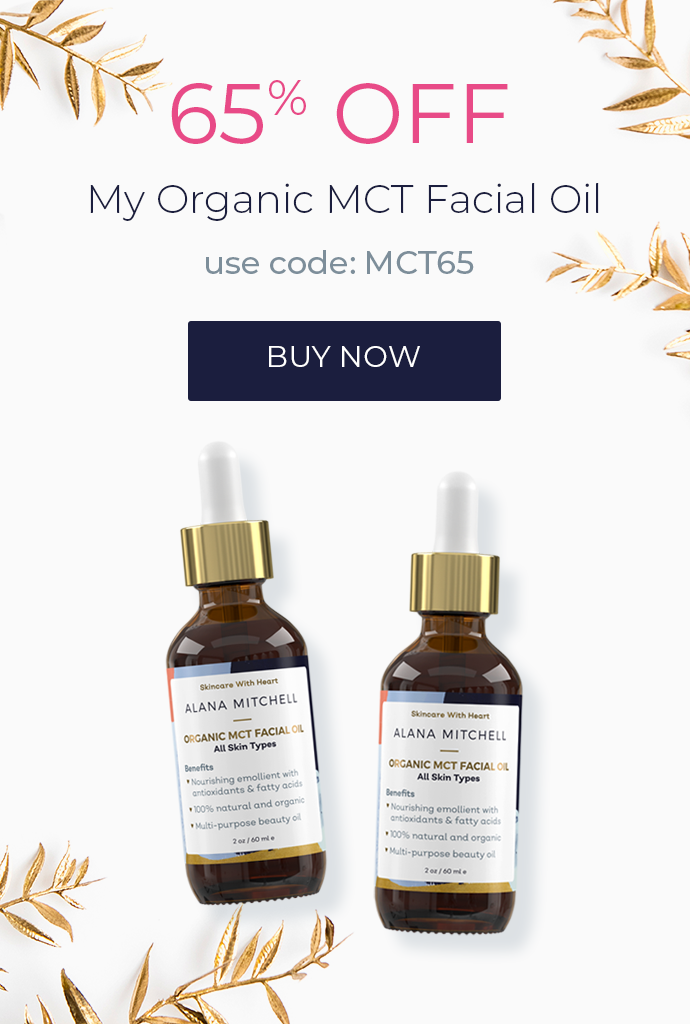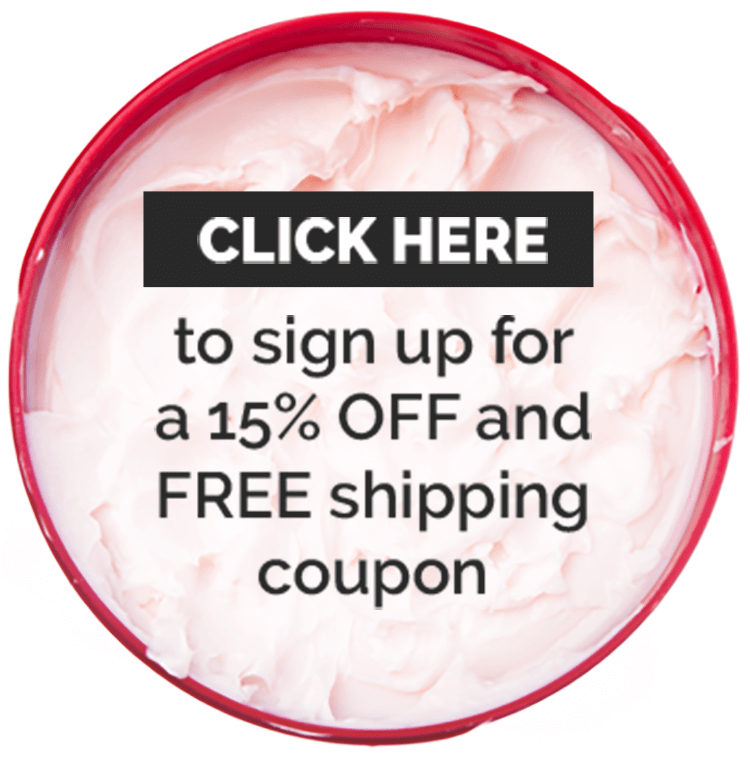What Should You Be Using In Your Skin Care Routine?
Take my quiz and get personalized recommendations from a
licensed esthetician!
Chapter 6: Active vs. Inactive Ingredients

If anything would be clear to a reader of this blog, it’s probably this – it’s critical to know the ingredients of the products you put on your skin.
Ingredients. Are. Everything.
And the more you know – the more I can help clarify some of the trickier areas of this industry – the healthier and safer your skin care routine will be.

That tells me we’re getting the message across in this industry about the importance of ingredients.
That said, have you ever picked up a product in the store and turned it over with confidence to check the ingredients, and a few seconds later turned it right back over feeling frustrated and lost?
I get that.
I’ll let you in on a little secret…an ingredients label CAN be a bit overwhelming, even to an esthetician like me who’s been in this business for many years!
The sheer number of ingredients alone can boggle the mind.
I’m so glad to be living in a time when we are waking up to the importance of what goes into our bodies and onto our skin.
It’s exciting to be a part of!
But let’s face it, it’s also confusing.
We know we WANT to be safer and healthier, but it’s not always easy to know exactly HOW.
Ever heard anyone say something like this: If you can’t pronounce an ingredient, you shouldn’t use it on your skin?
While that’s a good thought to have, it’s not exactly right.
After all, antibiotics can be hard to pronounce - and they’re pretty useful!
Some of the ingredients with the most scientific-sounding names are actually powerful, effective, and quite safe.
Here’s the reality - there’s contradictory information floating around, and there’s a flood of science to wade into.
And it’s just not as simple as saying that “natural” is always better.
In this guide to skin care ingredients, my goal is clarity and simplicity, where possible.
Let’s take a look at labeling practices to start, and then focus in on some of the key ingredients you should be looking for.
By the end of this guide, I hope to transform you into a lean, mean label reader who can handle an ingredients list with more ease!
And, one who can purchase healthy products with confidence.
No, we cannot cover every ingredient out there. The list seems endless.
But yes, I can help arm you with an understanding of the labeling practices you’ll run into, the big 5 ingredients to look for, what to avoid, and where to go (besides right here) when you see something you don’t recognize and need a little help.
Fair enough?
Let’s dive in!

What Are Active vs. Inactive Ingredients?
A common question I hear relates to the difference between active and inactive ingredients: "Why do you see them listed on some products and not others? And what do they mean?"
The answer to that comes down to FDA regulations, which can get a bit complex.
To simplify, I won’t get into all the ins and outs of cosmetics regulation (you can read more here if interested), just the basics that I think will help you the most.
There are 4 things to know about FDA labeling requirements in order for me to address those questions:
1. The FDA is concerned with a product’s intended use.
It defines a product as a “cosmetic” if its intended use relates to appearance or cleansing.
Cosmetic ingredients must be safe to use as intended, but they don’t have to be approved by the agency before a product goes on the market.
An exfoliating scrub that makes no medical claim is cosmetic, for instance.
Its ingredients don’t need to be preapproved by the FDA, but they do have to be safe to use.
2. The FDA defines a product as a “drug” if it’s intended to affect the way your body works or treat/prevent diseases, including certain skin conditions.
Ingredients classified as drugs must be preapproved by the FDA.
An over-the-counter acne medication, for instance, is not cosmetic alone, and it will contain at least one ingredient classified as a drug.
3. If a product is intended to treat/prevent a medical condition and contains an ingredient classified as a drug, then it must list the active vs. inactive ingredients on the label.
The active ingredient will be the FDA classified drug intended to treat or prevent the skin condition.
The inactive ingredients will not be FDA classified drugs.
4. If a product is intended to enhance appearance and makes no medical claims, then it won’t need to list active vs. inactive ingredients.
It won’t be required to display what’s known as a “drug fact panel.”
Cosmetic ingredients will be listed in order of the amount present, from highest to lowest.
(Note: Ingredients present at concentrations less than 1%, however, can be listed in any order thereafter.)
So, back to the question…why do you see active and inactive ingredients listed on some products and not others?
Because some products claim to treat or prevent medical conditions and others do not.
That’s why you’ll see an active ingredient listed on an acne product that contains salicylic acid, for instance, but you won’t see an active ingredient listed on an exfoliating scrub that contains sodium benzotriazolyl butylphenol sulfonate (say that 3 times fast!)

Why All Skincare Ingredients Matter
In the case of the acne product, its intended use is to treat or help prevent acne, and the ingredient salicylic acid (a BHA) is considered the active ingredient for that intended use.
It is classified as a drug in that product (salicylic acid is approved as an acne treatment for the skin at concentrations from 0.5% to 2%).
The inactive ingredients in the same product are not classified as drugs.
That doesn’t mean they don’t play an important role in the product or that they don’t have any effect on your skin.
It simply means they aren’t classified by the FDA as drugs that treat acne.
In the case of the exfoliating scrub, the intended use is to improve the texture and appearance of the skin.
That’s cosmetic, yes?
Yes!
And therefore, no active ingredients will be listed on its label, and none of its ingredients will be treated as drugs by the FDA.
The ingredient I mentioned above, sodium benzotriazolyl butylphenol sulfonate, is a UV light stabilizer which protects the product (not your skin) from breaking down when exposed to UV radiation.
It isn’t meant to affect your skin at all, but it won’t be listed as “inactive” on the label.
It will probably appear near the end of the ingredients list, because there won’t be a large amount of it present.
The ingredients in this product will be listed in the order of the amount present, from highest to lowest.
What if that same exfoliant contains salicylic acid, you ask?
Aha! Great question.
As long as the product is not labeled with the intent to treat a medical condition, it won’t need a drug fact panel and won’t list any active ingredients.
In that case, salicylic acid won’t be listed as an active ingredient and treated as a drug, but instead will be listed with the other ingredients in order of concentration.

The Claim is Key
I hope these two examples help clarify how active and inactive ingredients are determined and what they mean to us as consumers.
That classification alone doesn’t tell you much at all about the strength of an ingredient or its effect on the skin, as you can see.
And, of course, a product may very well help acne-prone skin without being classified as an acne treatment by the FDA.
If the product doesn’t make claims on the label about treating acne, then it won’t be classified as an acne treatment and won’t fall under the same FDA restrictions.
...Even though it may still have powerful effects on acne-prone skin.
Another point to clarify here is that when a product is considered an over-the-counter medication and makes a medical claim, the inactive ingredients may be listed alphabetically rather than in order of concentration.
That can be frustrating because you won’t be able to get a clear picture of the amount of each ingredient present.
A Quick Rundown

Are you with me so far?
You now know more about skincare labels than the majority of all consumers.
Good for you for hanging in there!
Next, let’s look at some of the ingredients you’ll see when you start checking labels more closely, and how they function in your products.
Skincare Ingredients to Know
The list below is by no means an extensive one.
But I do want to highlight here a few key ingredients to know.
If you’re not already familiar with them, I predict you will come to love these tiny but mighty compounds for the great effects you’ll see after consistent use.
Alpha hydroxy acids - These are beneficial chemical exfoliants found in cleansers, masks, toners, and moisturizers which loosen dead skin cells without friction.
They’re usually safe for sensitive skin and include glycolic acid, lactic acid, and mandelic acid. Read more here.
Hyaluronic acid - This is a humectant with amazing powers to absorb and retain moisture within your skin.
It’s something our bodies make naturally, but production decreases as we age, so it’s a great revitalizer for the skin. Read more here.
Retinol - This benefits of this vitamin A derivative tend to sound like magic, but are quite real.
The list includes unclogging pores, smoothing skin, and boosting cell turnover.
Used carefully, it’s a rejuvenating wonder ingredient at the cellular level.
It should be avoided during pregnancy, however. Read more here.
Ceramide - This is a wax-like substance that occurs naturally on your skin and supports barrier function.
It defends and protects, keeping the good in and the bad out.
Natural production tends to lessen as we age, and you’ll often find it in moisturizers. Read more here.
Peptides - These are small amino acid chains which aid in the communication between the cells.
This means they play an important role in immunity, hormone activity, and wound healing.
Peptides are known to reduce wrinkles and help maintain collagen production.

Skincare Ingredients to Avoid
And now for the not-so-great ingredients that can sometimes lurk behind labels that shout “natural” and “organic.”
Keep an eye out for them, and when you spot them, you may want to give that product a pass.
At the top of my list to avoid are the three P’s: Parabens, Pthalates, Petrolatum.
I personally have chosen to make all of my skincare products paraben-free.
A word about preservatives here: Keep in mind that claims of “preservative-free” do not necessarily make for a safer product.
On a positive note, there are many natural alternatives to traditional preservatives!
Leuconostoc (radish root ferment filtrate) is one of my personal faves for this.
Preservatives are absolutely necessary in some form to prevent spoilage and keep bacteria out.
Reliable Info Sources
OK lovelies, we’ve definitely covered a lot of ground here.
For those who are interested in more, I’ll leave you with a couple of reliable resources where you’ll find the down-low on labeling practices, regulations, and the safety of common ingredients:
- The Personal Care Products Counsel has a helpful ingredients dictionary.
- The FDA has a database related to all things regulatory in cosmetics.
- My team and I continue to develop the ingredients dictionary here on this site.
FYI - this is a good source of info about the problems with the Environmental Working Group and its Skin Deep Database.
While I haven’t done any research on that myself, the author there clearly has!
My Take On Ingredients
As I mentioned above, I have my own skincare line that I developed myself.
Here’s the backstory: As an esthetician, I found formulas I enjoyed using, but I felt that they could be improved and that something was missing.
I decided to create my own products with natural and organic ingredients, hand-picked by yours truly!
I’m all about applied science to green products.
It’s exhausting and frustrating to do research on products and purchase them, only to find that they didn’t do anything for your skin!
My goal is to provide you with products that actually work and that actually deliver results.
I wanted to make it easy for you to find products that work for your skin.
My team personally tests my products before they’re released, and I’m all for transparency.
I’m so eager for you to try one of my products for yourself that you can get it for FREE!
Right now, you can get 1 of my Clear Collagen Peel-Off Masques if you just pay for shipping.
Final Thoughts
One thing is for sure, beauties, ingredients aren’t always simple, and I commend you for seeking out quality information about your skincare products.
After reading this, you won’t confuse “inactive” ingredients with ingredients that don’t affect your skin.
You know a lot more about how ingredients are listed and what the order of presentation means.
And you’re familiar with how the FDA regulations affect what you see on the label.
No more succumbing to fear-mongering about chemicals!
Keep checking those labels, and I’ll keep providing you with the best information I can find!
In this busy world we all live in, taking the time to slow down and become more mindful of what goes on your skin is something you should feel great about.
Believe me when I tell you, your skin will thank you!
What are your current favorite ingredients? How do the labels check out on the products you use regularly? If anything comes up that leaves you wondering, ask away in the comments and I’ll do my best to help!
Top Brands
New Brands

Recent Posts

Are You Taking the Right Steps to Care for Your Skin?
Take the Quiz
Skincare Secrets!
10-step guide for healthy, beautiful skin after kids.
100% privacy. I will never spam you!















